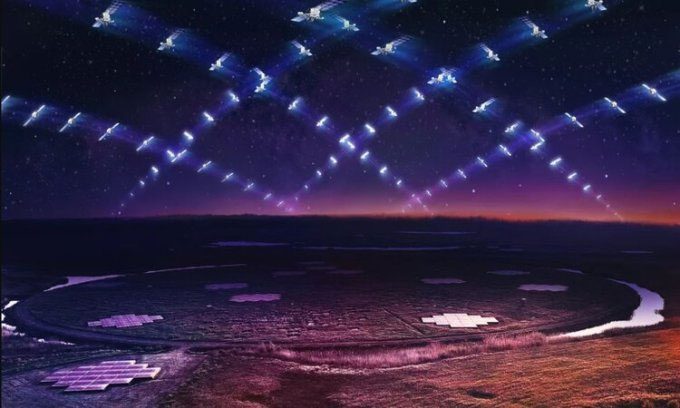A group of researchers has found evidence that radiation from SpaceX’s Starlink satellites may disrupt astronomical observations made by radio telescopes.
Experts have long warned that large satellite constellations in low Earth orbit, such as SpaceX’s Starlink, could impact astronomy. A new study published on July 5 in the journal Astronomy & Astrophysics reveals another source of interference is radiation from electronic devices on Starlink satellites.

Electronic devices on Starlink satellites emit radiation disrupting astronomical observations. (Photo: ASTRON/ Danielle Futts)
Researchers utilized the Low Frequency Array (LOFAR), a network of over 40 radio antennas spread across the Netherlands, Germany, and several other European countries. The telescope can detect the longest wavelengths of radiation emitted by objects in the universe. However, Starlink satellites also emit radio frequencies similar to those targeted by LOFAR. In this new study, the international team recorded low-frequency radio signals from nearly 50 Starlink satellites.
“With LOFAR, we detected radiation between 110 – 188 MHz from 47 out of 68 observed satellites,” said Cees Bassa, a researcher at the Netherlands Institute for Radio Astronomy (ASTRON), which manages LOFAR. “This frequency range includes approximately 150.05 – 153 MHz, which is designated for radio astronomy, according to the International Telecommunication Union.”
This finding is particularly concerning for next-generation large-scale radio observatories like the Square Kilometre Array Observatory (SKAO), currently being constructed in two remote locations in Australia and South Africa. To maximize the detection capability of weak signals, authorities often choose sites free from radio signals from sources like mobile towers or TV. However, the Starlink satellite constellation can freely fly above these areas and disrupt observation results due to operating at low altitudes. The research team also modeled the impact of radiation from a larger number of satellites, showing that the unintended effects will become more pronounced as the size of the satellite constellation increases.
SpaceX is collaborating with astronomers to find solutions that allow the satellite constellation to exist without negatively affecting astronomy. According to astrophysicist Jonathan McDowell, SpaceX has launched over 4,000 Starlink satellites. The company is licensed to deploy 12,000 broadband communication satellites and has applied to launch an additional 30,000 Starlink satellites.




















































